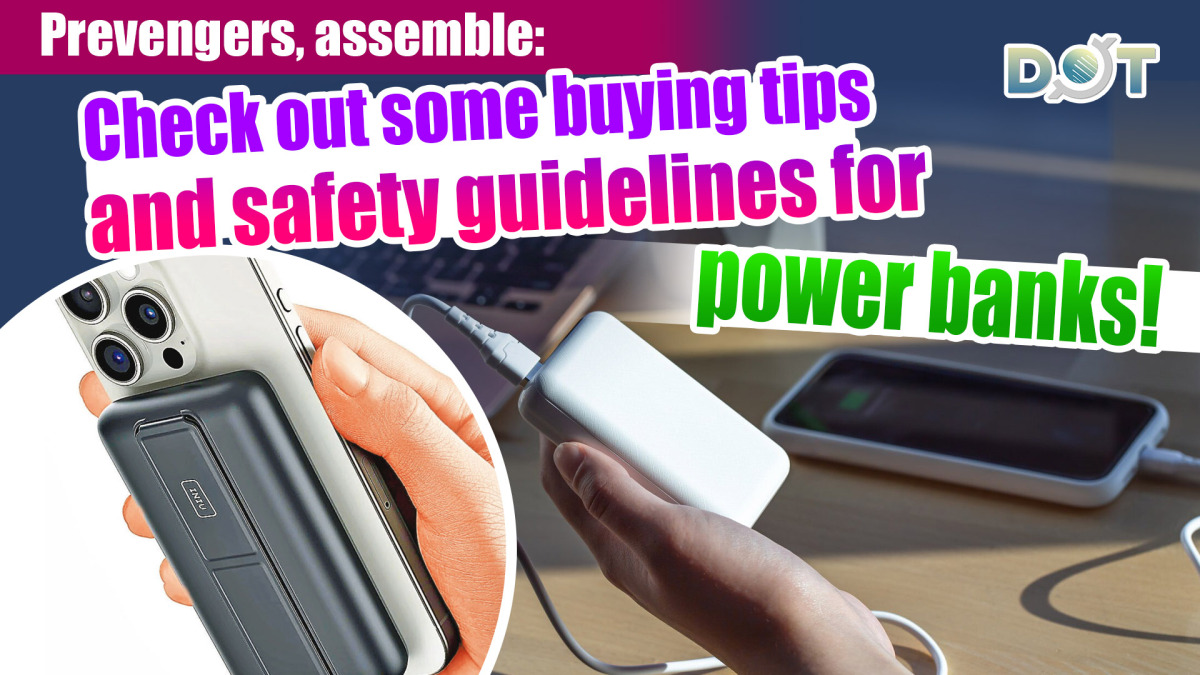
With recent incidents of power banks catching fire, public concern regarding their safety has increased. The market offers a variety of power banks, from lightweight models to high-capacity versions. Here are six key considerations to help you choose a safe and reliable power bank, especially during the busy travel season.
1. How to Determine Safety?
Look for quality certifications on the packaging, such as:
- MFM Certification: "Made for MagSafe," ensuring the product meets Apple's standards for safety and efficiency.
- International Certifications: Common ones include CCC (China), RoHS, CE (EU), and FCC (USA). These logos indicate compliance with international safety standards.
2. Does Fast Charging Cause Battery Damage?
Fast charging technologies like Qualcomm's Quick Charge and USB Power Delivery are widely used. It should be safe if you use the original charger that comes with your device. Modern batteries have smart chips that regulate temperature and current, preventing overheating and extending battery life, even with fast charging.
3. Do Power Banks Have a Best Before Date?
The natural aging of lithium batteries influences the lifespan of a power bank. Always check the manufacturing date and opt for newer products for optimal performance. If a power bank has physical damage, charges slowly, or shows signs of swelling, it should be immediately discontinued. Rapid discharges during use are also a warning sign.
4. What Protection Features Are Available?
Quality power banks often include multiple protection features, such as:
- Overheat Protection: Prevents excessive temperature.
- Overcharge Protection: Avoids overloading connected devices.
- Overvoltage Protection: Stops high charging voltage.
- Overdischarge Protection: Prevents excessive battery discharge.
- Overload Protection: Prevents excessive output.
- Short Circuit Protection: Cuts off power in case of a short circuit.
5. How to Assess Battery Capacity?
When selecting a power bank, the stated capacity (e.g., 5,000mAh, 10,000mAh, or 20,000mAh) is often highlighted. However, this does not reflect the actual usable power. Check the rated capacity, which accounts for real-world losses. Typically, conversion efficiency for power banks ranges from 70% to 90%.
For example, a power bank with a stated capacity of 20,000mAh at 3.7V can be calculated as follows:
- Energy Density (Wh): Capacity (mAh) × Voltage (V) / 1000 = 74Wh.
- With 85% efficiency, the usable energy would be 74Wh × 85% = 62.9Wh.
- To find the effective capacity at 5V: 62.9Wh / 5V = 12,580mAh.
Always check the rated capacity and conversion efficiency before purchasing.
6. What Are the Restrictions for Bringing Power Banks on Airplanes?
Power banks cannot be checked in and have a capacity limit of 160Wh or below (approximately 20,000mAh). When choosing a power bank, look for one that specifies its Wh rating. Airlines like Cathay Pacific and Hong Kong Airlines allow passengers to carry up to two power banks under this limit. Additionally, power banks must be kept in their original packaging or have terminals covered to prevent short circuits. Always verify compliance with airline regulations before travel.
By following these guidelines, you can ensure a safer experience with your mobile power bank while traveling!
(Source: Lion Rock Daily)
Related News:
CAD issues new regulations on lithium battery power banks for aviation safety
Suspected power bank fire on HK Airlines aircraft: In-flight usage restricted by multiple airlines




















Comment